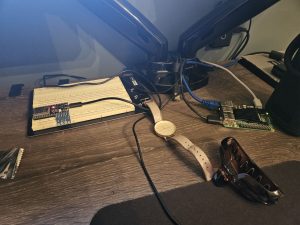Progress This Week:
- Final Model House Assembly:
- Started assembling the final version of the model house.
- Mounted and arranged key components including sensors, actuators, and control hardware.
- https://www.youtube.com/watch?v=lwfSNxuyoHU
- System-Wide Integration:
- Worked on integrating all electronics subsystems into a cohesive unit.
- Ensured communication and coordination between various components including power sensors, motors, fans, lights, and the backend.
- Collaborative Integration with Team Members:
- Final integration of backend systems and automation logic with Anya’s code.
- Connected Erika’s model and planning elements with the functioning electronics to align the system behavior with the physical house layout.
Challenges Encountered:
- Aligning hardware layout with model structure required careful adjustments to cabling and sensor placement.
- Synchronizing logic between Anya’s automation code and the backend required debugging API endpoints.
Next Steps:
- Finalize physical assembly and test all integrated electronics.
- Run full-system tests for behavior validation and robustness.




